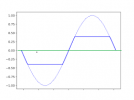sumitkpandit
Member
What makes sense to me is following...
- If we drive a speaker with a powerful enough amplifier that can push more power to the speaker than its RMS power or even Peak Power handeling, it will blow out the speaker coil.
- If we drive a speaker with very low impedance with a reciever that is not meant to handle that low impedance, the amplifier in the reciever overworks to produce that power and gets upset.
But I have also heard that when you pair a low output reciever to a high RMS speaker, you end up destroying it. This does not make a lot of sense to me. Can someone explain this? My idea is that the stress on the speaker is only dependent on the power we are supplying to it.
For sensitivity I totally understand that higher sensitivity is better, you can hit higher levels with low power. What about the impedance? If your reciever can supply 70 W to a 8 ohm speaker is it not better to get a 6 ohm speaker if it supports to get more power from the reciever? Is sensitivity also releated to impedance somehow?
- If we drive a speaker with a powerful enough amplifier that can push more power to the speaker than its RMS power or even Peak Power handeling, it will blow out the speaker coil.
- If we drive a speaker with very low impedance with a reciever that is not meant to handle that low impedance, the amplifier in the reciever overworks to produce that power and gets upset.
But I have also heard that when you pair a low output reciever to a high RMS speaker, you end up destroying it. This does not make a lot of sense to me. Can someone explain this? My idea is that the stress on the speaker is only dependent on the power we are supplying to it.
For sensitivity I totally understand that higher sensitivity is better, you can hit higher levels with low power. What about the impedance? If your reciever can supply 70 W to a 8 ohm speaker is it not better to get a 6 ohm speaker if it supports to get more power from the reciever? Is sensitivity also releated to impedance somehow?




